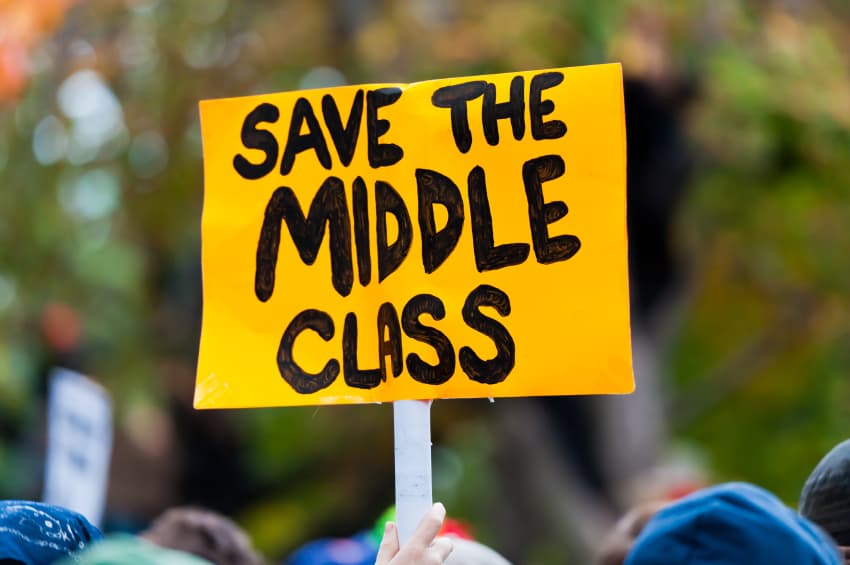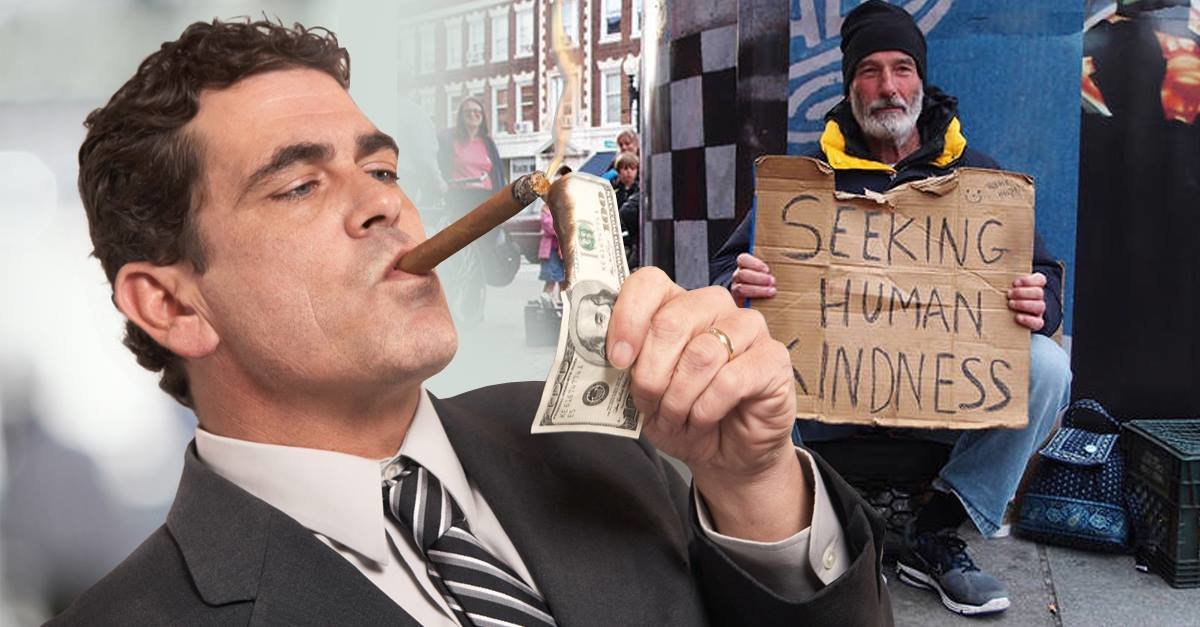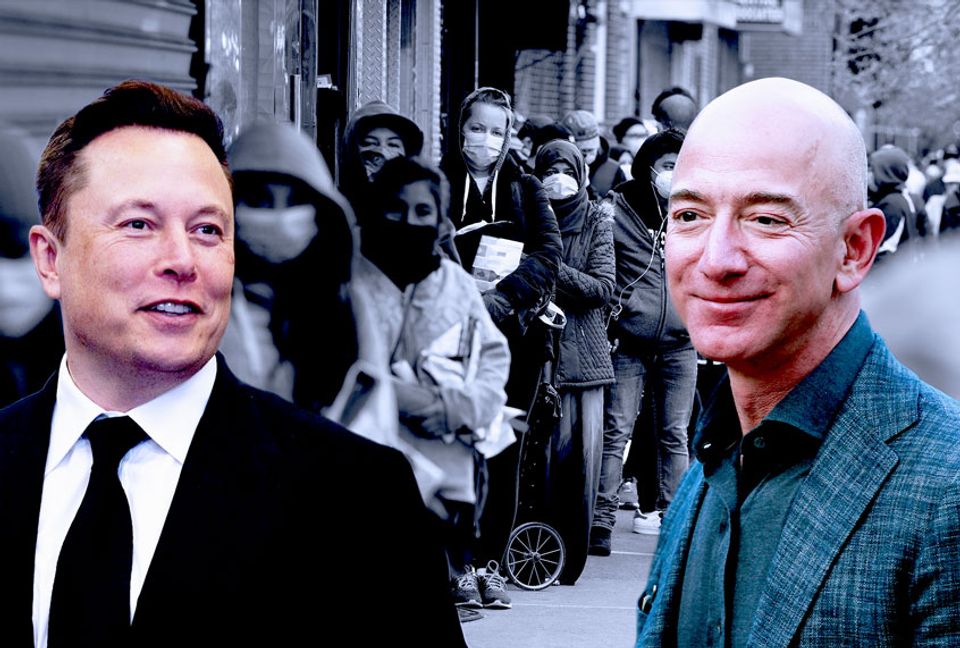The top five wealthiest individuals are Elon Musk ($180b) at the top, followed by Jeff Bezos ($114b), Bill Gates (135.8b), Larry Ellison ($119.5b), and Mark Zuckerberg ($117.5). Zuckerberg is also the youngest at 39. Warren Buffet is the 7th richest person and Charles Koch ($54.2b), the villain of liberals everywhere, is 17th. Julia Koch ($54.2b), widow of Charles' brother, David, is 18th, making her one of the wealthiest women in the world.
As an aside, these are the richest individuals in America. Globally, Bernard Arnault of France is the second wealthiest person, behind Musk with a net worth of roughly $174 billion. The balance of the list is the same, making the top 9 out of 10 richest Americans.
Meanwhile, Michael Bloomberg ($69b), the bane of conservatives, is actually much richer, clocking in at 10th place. Of course, these figures are approximate. By the time it took just to type the figures, they already grew several hundred thousands of dollars. And for those who like to gloat, former President, Donald Trump, is no longer among the top 400 wealthiest. According to Forbes, "The Donald's" wealth has dropped from $3.2 billion to $2.6 billion. While that puts him about $300 million dollars shy of the top 400, I doubt Melania is having to clip coupons.
But what about us ordinary Americans? How do we stack up? As of 2022, the "official" poverty rate in the United States was 11.5% or around 37.9 million people. The number of children living in poverty as of 2022 was 12.4%, up from 5.2% in 2021. However, the actual poverty rate of Americans is much higher, especially when you consider that 49% of Americans are dependent in some matter on government services. That translates to roughly $1.19 trillion dollars or 20% of the federal budget.
Historically it's been the middle class which has provided the economic and social structure to society. The middle class provides the overall stability which keeps capitalist democracies afloat. Ideally, a society should have a relatively small upper class and a small lower class with a large center. However, that's not the case anymore.In 1971, 61% of Americans were middle class. By 2021, it was just over 49%. To make matters worse, those in the upper third of the middle class dropped significantly to middle income while many of those previously in middle portion either remained the same or dropped into the lower middle class, thus making the lower middle class the largest of all the economic classes.
Minorities, which had struggled for decades to reach a middle or upper middle class lifestyle (reaching their zenith in the 1980's) have dropped to middle or lower middle income. The decline of the middle class coincided with the closure of factories and exportation of good paying, and mostly union jobs overseas in the name of improving shareholder profitability and staving off corporate raiders.
The decline of the middle also coincided with growth of the lower class which increased to 25% of the population (some studies put the figure closer to 29%). Of that 13% were classified as "working poor" while 12% were defined as "underclass". Note that none of this takes into consideration those who are under employed or have simply given up looking for employment.
I should also mention that the rate of homelessness has also grown along with the decline of the middle class. Currently 22% of the homeless are categorized as "chronic", meaning they are unable to be find regular shelter. 5% of the homeless have children with them (defined as those under age 25). 6% of the homeless are veterans. The majority of homeless, 21.5%, are men. 13.3% are women.
When we take a look at wages, the situation becomes more dire. As of 2022, the average company CEO made a whooping 670 times more than the average employee---not the lowest paid employee mind you, but the middle income earning employee. That means for every dollar the average employee earns, the CEO gets $670. In 2021, that ratio was 399-to-1. By 1989, it was 59-to-1, and in 1965 CEO's made $29 dollars for every dollar the average employee made.Between 1979 and 2022, the pay of senior company executives went up 1209.02% while the average worker's compensation went up 15.3%. It's worth noting that since 1975, prices overall have increased by 361.41%, or to rephrase it by saying that it would take $5.72 in 2022 to buy the same amount a dollar in 1975 would. Thus when adjusted for inflation, the purchasing power of a dollar relative the rise in wages, which helps to explain, at least partially, the decline of the middle class.
When we look at the situation globally, the picture is much the same. The upper 10% take home 52% of the income while the poorest 50% has just 8%. In terms of overall wealth, the top 10% control 85% of all wealth while the bottom 90% control 15% with the poorest segment owning a mere 2%. The top 1% control 50% of the world's wealth.
Compare that with the U.S. where, according to the Federal Reserve, as of 2021, the top 1% controlled 32.3% of the total wealth while the bottom 50% controlled just 2.5%. As of the end of the second quarter of 2023, the Federal Reserve said that the top 10% control 69% of the total wealth while the lowest 50% had just 2.5%. The top 1% controlled just over 1/4 of the total wealth in the U.S..
Globally speaking, the United States has the fifth worse level of income inequality out of the top 35 industrialized nations. Only Bulgaria, Turkey, Mexico, and Costa Rica were worse off. The U.S. also still had the highest disparity between CEOs and workers by a large margin. The next closest was Switzerland where the wage disparity between CEO's and workers was 148%, followed by Germany at 147% and Spain at 127%.
As an aside, it should be pointed out that the COVID-19 pandemic contributed to the growing wage disparity since senior executives continued to receive their full compensation while the majority of the workforce was at home receiving next to nothing beyond unemployment and a couple of small government handouts (aka "stimulus checks").From March 5, 2020 through March 5, 2021, the height of the pandemic, Elon Musk's wealth increased by $118 billion dollars. Jeff Bezos saw an increase of $58 billion while Larry Paige and Sergey Brin saw their wealth grow by $33 and $32 billion dollars respectively. Mark Zuckerberg's portfolio increased by $29 billion, while Larry Ellison's grew by $28 billion. Bill Gate's financial worth blossomed by $24 billion. Two other billionaires, Steve Ballmer and Michael Dell saw their wealth grow by $23 billion and $18 billion. Money begets money, and they have a lot of money to beget!
The ever expanding wealth inequality has effectively created a two tier society both in the United States and abroad. The middle class has historically been the glue which held capitalist democracies together. Even during feudal times, it was the well-to-do peasant class which helped prop up the monarchies. The middle class has provided an incentive for the lower classes to try to achieve economically and socially while providing a social barrier for the upper classes.
It has been said that the middle class is the only thing protecting the rich from being murdered by the poor. However, if the middle class no longer has as much to protect, then there is no reason it shouldn't make common cause with the lower class which has happened previously in history. If that should occur, there would be a complete upheaval in society.
The choice, therefore, that we all must accept is either fundamental and real change in how society functions economically and politically, including possibly a defacto cap on individual wealth and a minimum corporate tax, or face a real threat of more radical changes at home and globally.There is no longer a middle ground. Attempts by politicians or the corporate media to divert our attention with another "crisis de jure" or even their blatant refusal to protect their financial interests just aren't going to cut it anymore. It's past time that we took charge of this country again.
In addition to the links below which explain the statistics mentioned above in greater detail, I've also include two short videos below which illustrate what we've discussed more entertainingly. We hope you enjoy them and will let us know what you think about the decline of the middle class and bifurcation of society politically and economically.
Video: Wealth Inequality in America: Visualizedfor 2023 (13:19)
Humphrey Yang
Video: Wealth Inequality in America (6;23)
politizane
If you enjoyed the article, please consider passing it along to others and don't forget to subscribe. It's free! Lastly please be sure to "like" us on whatever platform you use to read anotheropinionblog.com. It helps with the algorithms and keeps our articles in circulation. Thank you!
List of wealthiest Americans by net worth
Donald Trump drops from the Forbes 400 list of richest Americans. Here's what changed
For most U.S. workers, real wages have barely budged fordecades
Wage gap between CEOs and US workers jumped 670-to-1 lastyear, study finds
These charts show the growing income inequality between the world's richest and poorest
State of Homelessness: 2023 Edition





No comments:
Post a Comment